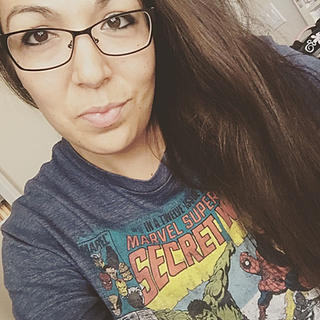Brayer Magic: Stunning Watercolor Mixed Media Techniques
- Tiffany Solorio
- Jan 6
- 3 min read
Are you ready to explore the world of watercolor mixed media with a brayer? This exciting technique adds depth, texture, and a unique flair to your art projects. Whether you're a beginner or an experienced artist, using a brayer can bring a new dimension to your creative process. In this post, we'll guide you step-by-step through a stunning watercolor mixed media project, optimized for handling water and achieving vibrant results. Let's dive into the magic of brayers!

Why Choose Watercolor Paper?
When working with mixed media, choosing the right surface is crucial. Watercolor paper is ideal because it handles water exceptionally well, providing a sturdy base for various techniques. For this project, we’ll use the smooth side of Distress Watercolor Paper to offer flexibility and ease in stamping and layering.
Benefits of Watercolor Paper:
Excellent water absorption
Durable for multiple layers
Ideal for vibrant color application
Essential Materials:
Before we start, gather these essential materials:
#12 round brush
Distress watercolor pencils (Seedless Preserves, Uncharted Mariner, Chipped Sapphire)
Non-stick mat from Ranger
Archival Ink in Black Soot
Stamps (script and texture)
Ranger Opaque Texture Paste
Tonic Studios silicone palette knife
Dina Wakley’s Gloss Spray (white)
Double-sided adhesive
Tim Holtz Occasions sticker pack
Check out the full supply list HERE
Step-by-Step Process
1. Preparing the Paper
Start by selecting the smooth side of Distress Watercolor Paper. This side offers a better surface for stamping and helps you avoid the tricky texture that might interfere with your design.
2. Applying Colors
Use a #12 round brush to pick colors like Seedless Preserves, Uncharted Mariner, and Chipped Sapphire. These hues create a stormy, oceanic effect. Add the colors to a non-stick mat, then gently roll the brayer over them to pick up the pigment.
3. Creating Texture
Roll the brayer lightly across the paper to spread the colors. Don’t press too hard; the goal is to achieve intriguing textures. If your first attempt doesn’t go as planned, don’t worry—experimentation leads to unique results!
4. Adding Splashes and Stamps
Enhance the design with splatters of purples and blues. This step balances the strokes and brings cohesiveness to your artwork. Next, use a script stamp with Archival Ink in Black Soot to add depth and texture.
5. Incorporating Texture Paste
Place a stencil over your design and spread Ranger Opaque Texture Paste using a silicone palette knife. This adds dimension and interest to your piece.
6. Finishing Touches
Once dry, add white splatters using Dina Wakley’s Gloss Spray or a white Posca pen. Attach acetate butterflies with double-sided adhesive and finalize with a sentiment sticker from the Tim Holtz Occasions pack. Rough up the edges of the panel before mounting it on a card base for a polished look.
Prefer to watch the video? Check it out below.
Tips for Success
Experiment Freely: Don’t be afraid to try different color combinations and textures.
Use the Right Paper: Watercolor paper ensures your work holds up under multiple layers and water applications.
Layer Wisely: Allow each layer to dry before adding the next to prevent muddiness.
Add Personal Touches: Incorporate elements from your stash to make each piece uniquely yours.
Conclusion
By following these steps, you’ll create a stunning mixed media piece that showcases the versatility of brayer techniques. Remember, the key to mastering mixed media is to enjoy the process and embrace the unexpected outcomes. Happy crafting, and as always, stay creative, my friends!







Comments